Should Ireland complete only their third Grand Slam, and 11th Triple Crown, on Saturday, it will once again happen on foreign soil. Only three of those previous 12 imaginary trophy wins occurred at the home of Irish rugby on Lansdowne Road, in 1982, 1985 and 2004.
I’ve always lived hard by the stadium, and it can be an empty, eerie place on a day when the crowds are absent, when the usual heroes of that field are doing their thing elsewhere.
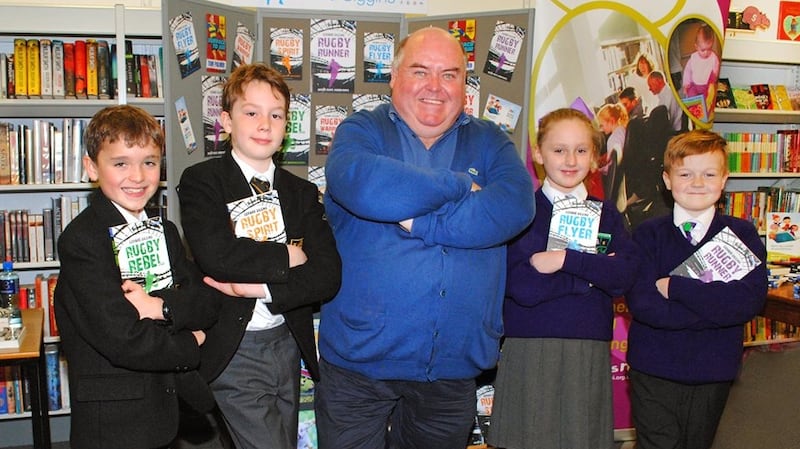
While the modern stadium is a clean, comfortable space which often struggles for atmosphere, my childhood memories of Lansdowne Road are of a seething, heaving, often raucous crowd but one whose greatest wrath was reserved for those who dared speak or, god forbid, whistle when a kick was being taken.
My memories are also of the ground empty of all but a handful of local urchins who got to use it as a playground in those pre-security guard days. I got to score dozens of tries and goals on the international pitch when the old groundsman permitted us to play.
Forty years later, when I came to write a children’s novel about a boy struggling to learn the sport who meets a ghost in a stadium, Lansdowne Road was the obvious place to locate the story.
I had previously co-written a history of Lansdowne Road with Irish Times sportswriter Malachy Clerkin, which included a chapter about the death of Brian Hanrahan, the only player to die of injuries received playing there, 90 years ago this month.
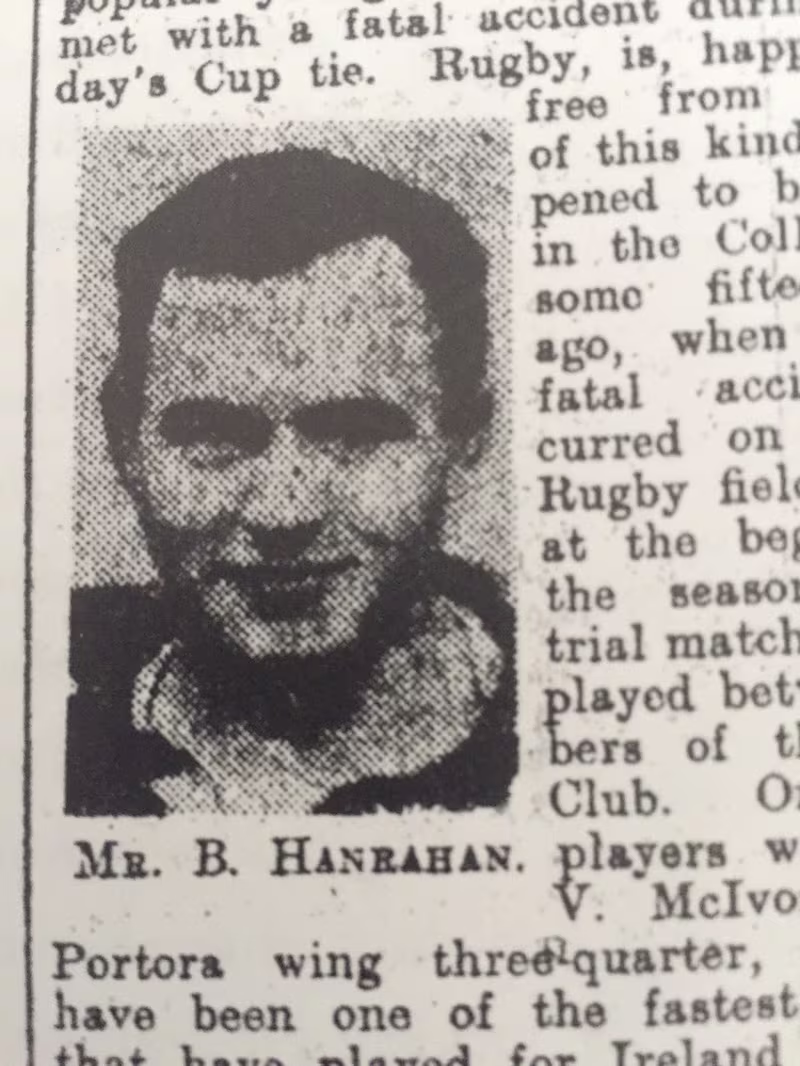
Brian was a Lansdowne prop who died after a scrum collapsed in a game against Trinity and he suffered a broken neck. For the novel, Rugby Spirit, I drew Brian as a ghost who helps my young hero, Eoin, to get better at rugby as well as solving a mystery and getting to understand more about the past.
The publishers, O’Brien Press, were happy with the reaction to the book, and asked me to write a sequel, and even consider a series. This presented me with a dilemma, and as I sat down to plan Book 2, I tossed around ideas such as keeping Eoin and Brian as the main characters, or even taking out the supernatural element.
But it dawned on me that I could develop the series with Eoin and Brian while adding a new ghost to each story. My interest in history, and sports history in particular, threw up some examples to explore. Five more men were to inhabit the books before the series drew to a close this month.
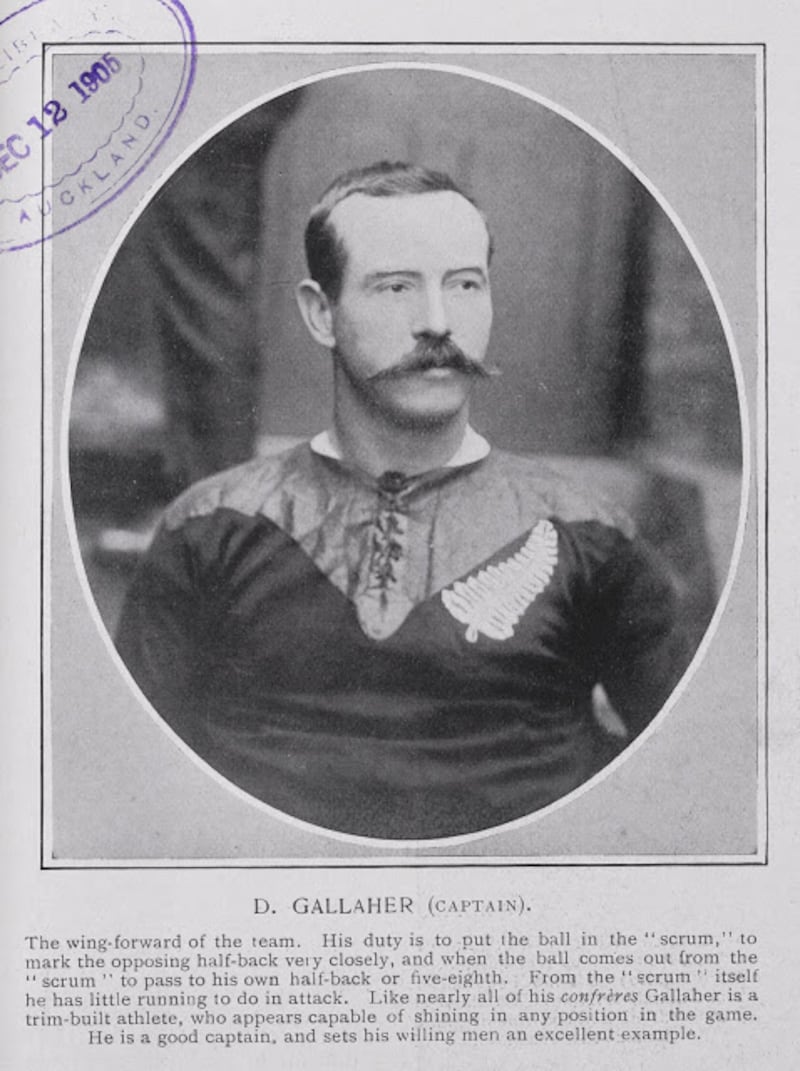
Rugby Warrior brought in Dave Gallaher, the Ramelton, Co Donegal-born player who was the first captain of New Zealand’s All Blacks and died on the battlefields of Flanders in the first World War. With a cover line that set down Eoin’s agenda (“Back in School, Back in Sport, Back in Time”) the sequel went down well and I had a bona-fide series up and running.
Gallaher was an inspiring story, both in sport and in his selflessness in volunteering for battle when, at 43, he would have been excused. He also co-wrote a book on coaching rugby which is still hailed as a classic of its genre.
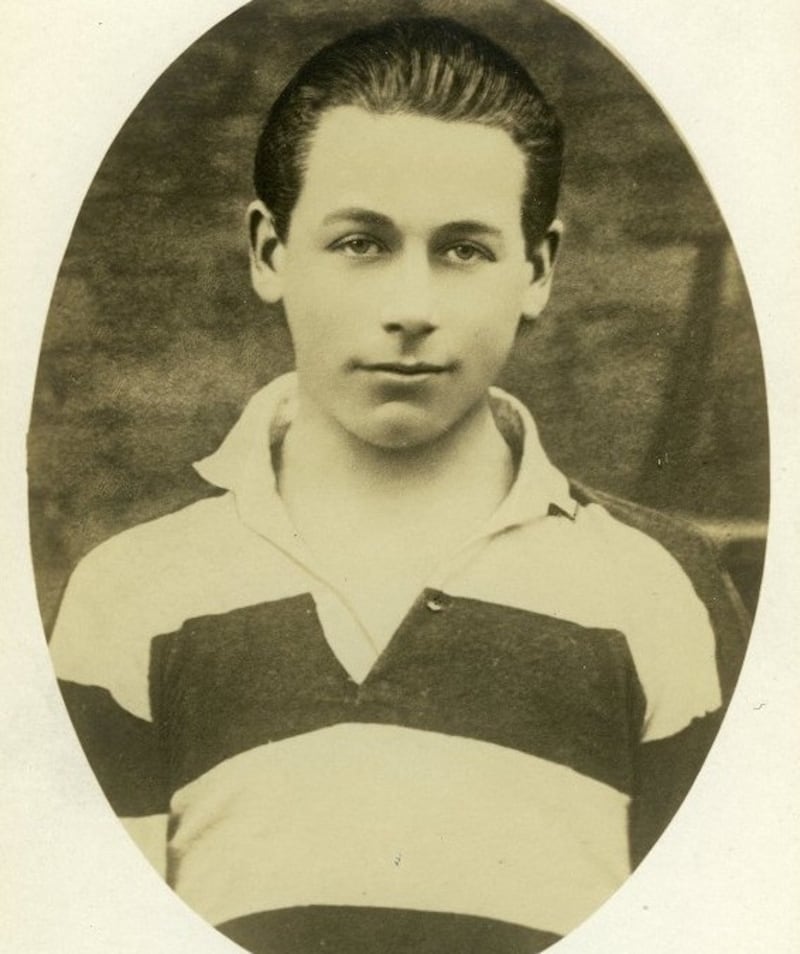
I next turned to Kevin Barry, the rebel who was hanged for his part in a raid on a bread van during the war of independence. Barry played rugby for UCD, and also while at school in Belvedere College, whose distinctive black and white rugby shirt he is wearing in the best-known photograph of him. Barry once scored a famous try for the school in Lansdowne Road in 1917, the year before he died.
In each of the sequels, Eoin meets the ghost of a former rugby player, but I set myself the task of only using those who lived interesting lives. So book four, Rugby Flyer, took my hero to London where he met Prince Alexander Obolensky, a former Russian nobleman whose family fled to Britain after the October Revolution. Obolensky grew up playing rugby and was capped by England, scoring two brilliant tries in a famous win over New Zealand in 1936. “Obo” later joined the RAF and died in a flying accident in the World War II.
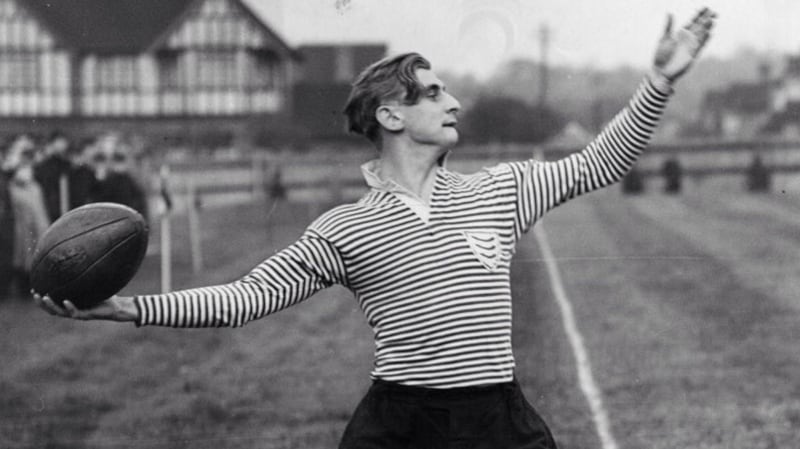
Although Eoin’s story was going well, I was starting to struggle to find interesting ghosts for him to team up with. I considered Éamon se Valera, but a childhood distaste for him ruled him out (he died during the summer holidays, thus depriving us of a day off). I then looked at war hero Blair Mayne, who played for Ireland and the Lions, but his off-field activities (fighting, drinking and male prostitutes) ruled him out of novels aimed at 8-12-year-olds.
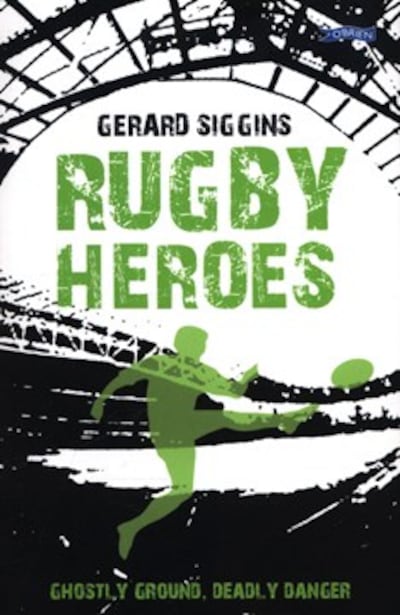
My young hero is a native of Ormondstown, a fictional town in Co Tipperary that may resemble Nenagh, from where my wife Martha hails. So it was one of those shiver-up-the-spine moments when I came across the fact that the man credited with inventing rugby – Rugby schoolboy William Webb Ellis – had spent two years in Nenagh as a boy.
It brought him into the fifth book, Rugby Runner, where Eoin and the ghost of Webb Ellis hunt down the World Cup trophy named in his honour.
This month, the last book in the series, Rugby Heroes, takes Eoin, and me, back to where it all began – the atmospheric, eccentric stadium where the grandstand had a train track underneath and two cottages at either end, none of which seemed out of place at the time. Eoin and Brian team up with Henry Dunlop, the man who built the original ground, as a threat unfolds which could threaten the stadium.
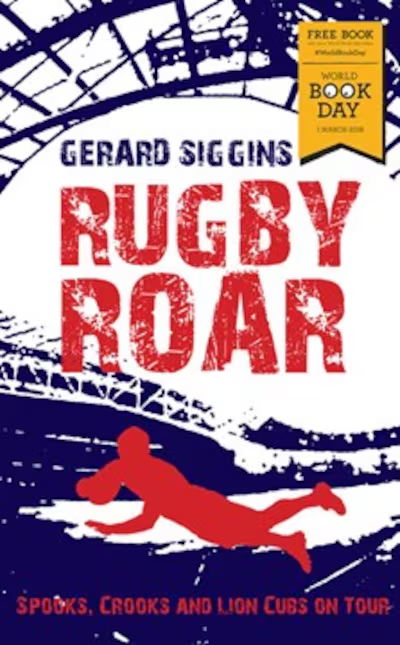
And just as eccentrically as Dunlop’s stadium developed, the last book is followed by an extra last book. Rugby Roar is a special story written for World Book Day which takes Eoin to New Zealand where he meets Dave Gallaher once again.
I miss the old Lansdowne Road, and I’ll miss my ghosts too.











